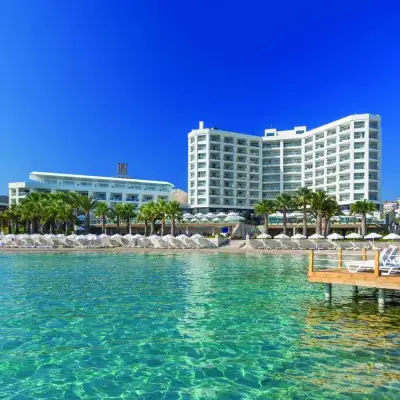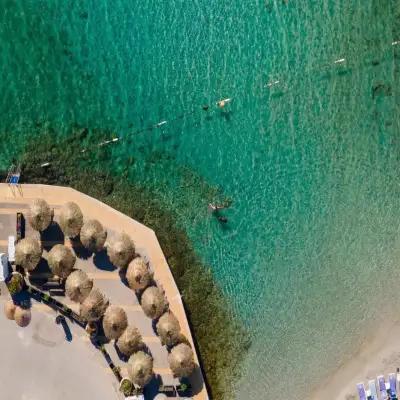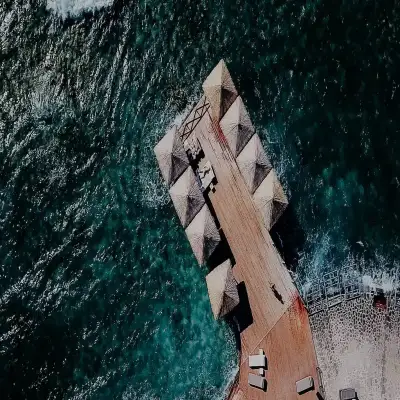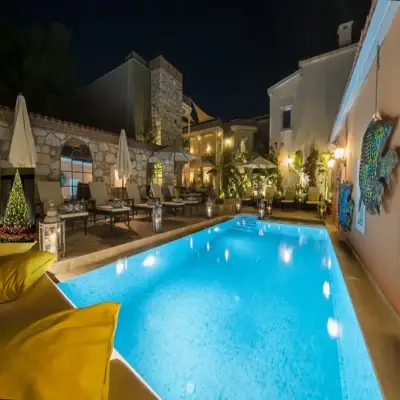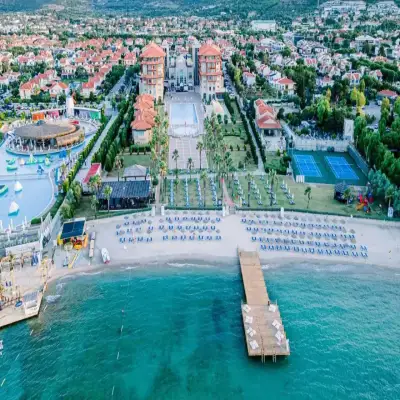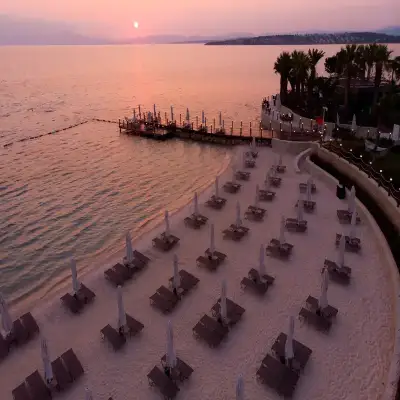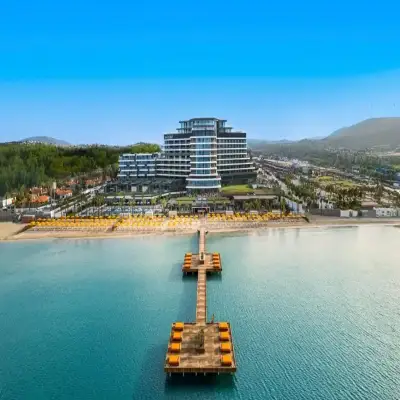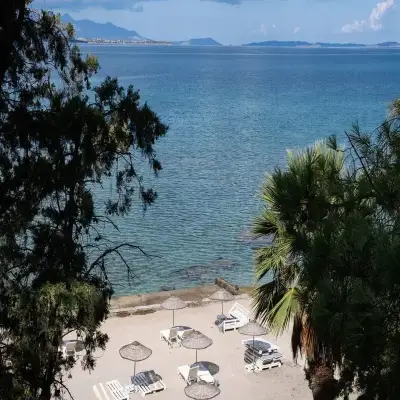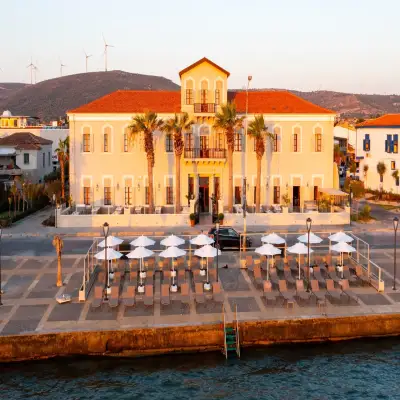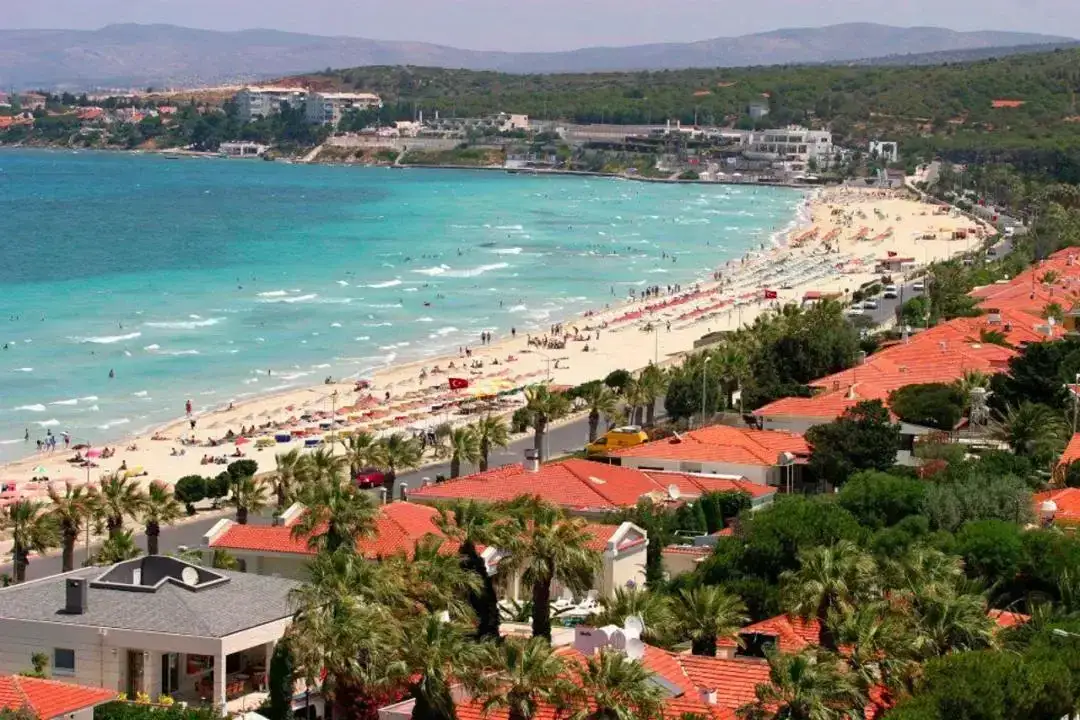
Places to see in Cesme Ilica
If we talk about Ilica and its surroundings in terms of places to visit and see, Çeşme, Alacati and Ilica show great similarities. Already these three regions are very close to each other. There is a distance of approximately 20 km between them. Ilıca Public Beach is already an important stop for both day-trippers and those who will stay longer. The place known as Şifne Bay is a very ideal option if you want to take a natural mud bath. It is a healing place with many alternative treatment options. There are also places to see in Ilıca for history and culture enthusiasts. There is the ancient city of Erytrai in Ildırı, a historical Greek village settlement about 14-15 km east of Ilıca. Here you can see the ruins of the ancient theater and sacred places. Apart from this, Çeşme Castle and Alaçatı streets and stone houses can be visited nearby.
Cesme Castle
Built by Beyazit II in 1508 in a rectangular shape, the castle forms a magnificent image with its 6 towers and moats on three sides. The castle, which was built on the seafront when it was first built, became more inland with the filling of the sea over time. The International Çeşme Music Competition and the Çeşme Festival between July 2-7 are organized in the castle. When you visit the castle, you will also see the statue of the great Turkish commander Captain Hasan Pasha with a lion next to him.
Caravanserai
Built in 1528 by Suleiman the Magnificent, the caravanserai adds a distinctive feature to Çeşme. The caravanserai, which was used especially for the accommodation of foreign merchants in history, now serves as a 45-room hotel. There are also night entertainment venues and shopping centers in Kervansaray.
Çeşme Museum
In the Çeşme Archaeology Museum located in the historical Çeşme Castle, where artifacts from Erythrai, Çeşme district center Alaçatı and Kalemburnu region are exhibited, 320 archaeological artifacts, 126 ethnographic artifacts and 31 coins, 477 artifacts in total are exhibited.
Erytrai (Ildiri)
Finds recovered from the city show that this region has been inhabited since the Early Bronze Age. During the second colonization period, the city was ruled by Knopos, a descendant of the Athenian King Kadros. Initially ruled by a kingdom, the city was later ruled by Basileus, also descended from kings but elected by the people. They joined the Panionion religious and political union established by the Ionian cities. The city experienced a short period of tyranny with Pythagoras and gained importance with the millstones it produced and sold during this period. Erythrai was captured by Lydia and later by the Persians. The city, which participated in the uprising against the Persian yoke like other Ionian cities, gained its independence in 334 B.C. along with all Ionian cities. After Alexander's death, Erythrai, which changed many hands as a result of the turmoil after the death of Alexander, passed into the hands of the Pergamon (Pergamon) Kingdom. In 133 BC, it gained the status of a free city within the Roman Empire. In the 1st century BC, the region suffered great destruction due to earthquakes, wars and looting by Roman commanders; After the 16th century, it became known as Ilderen and Ildırı,
For accommodation suggestions, you can check our Cesme Ilica Hotels page.


